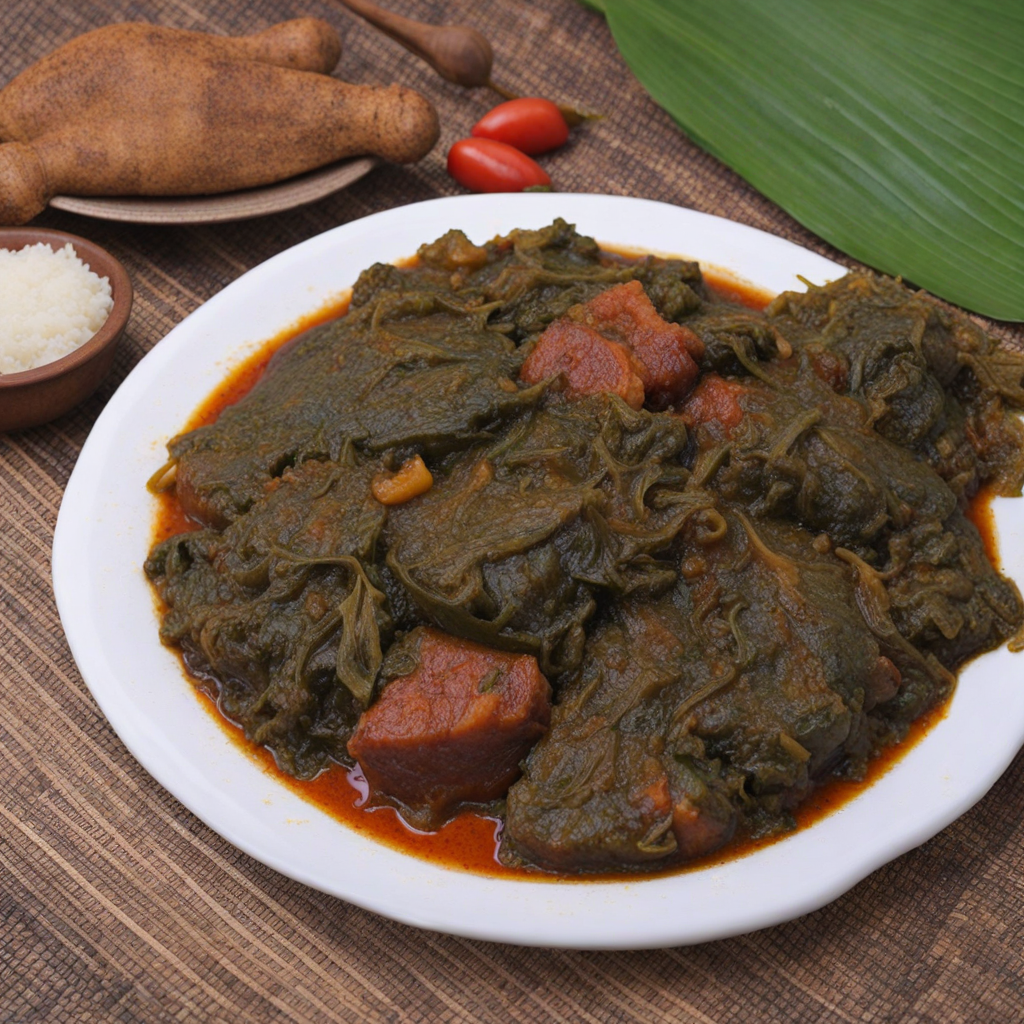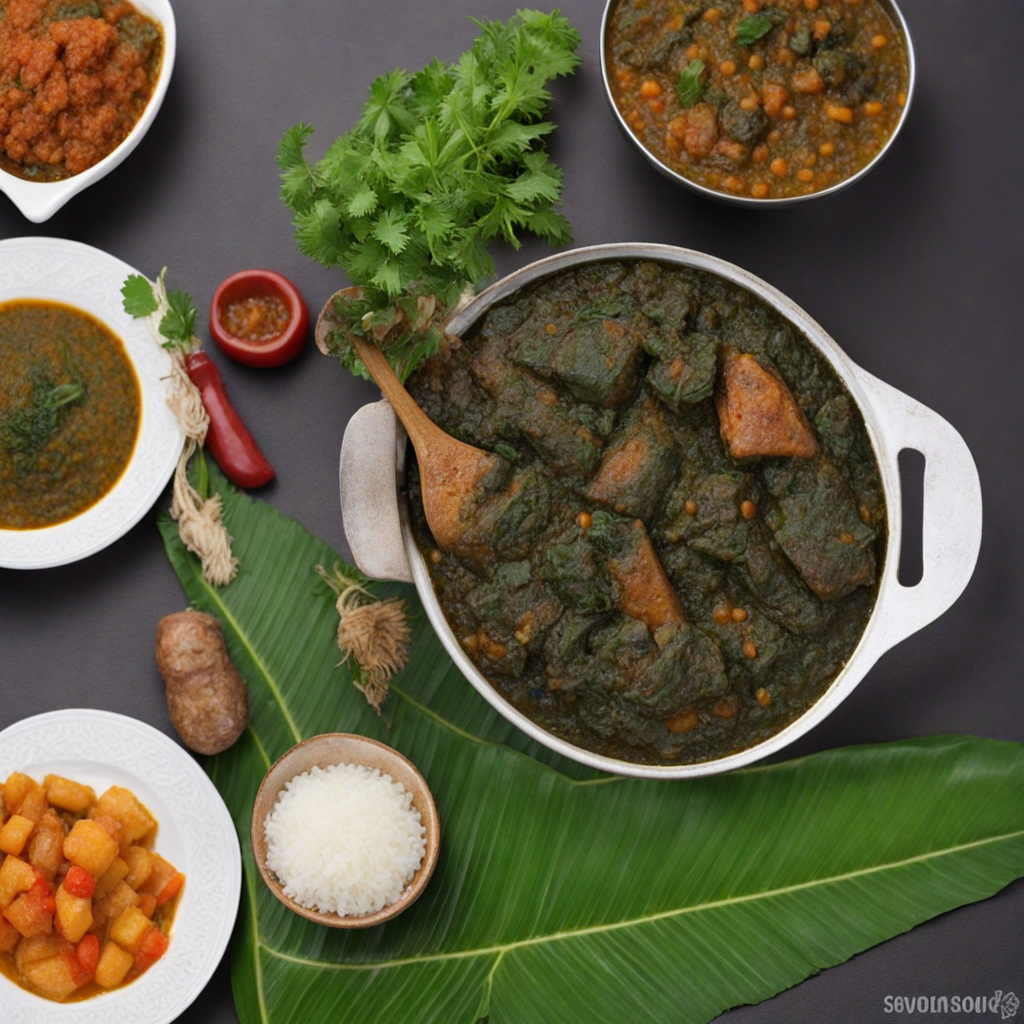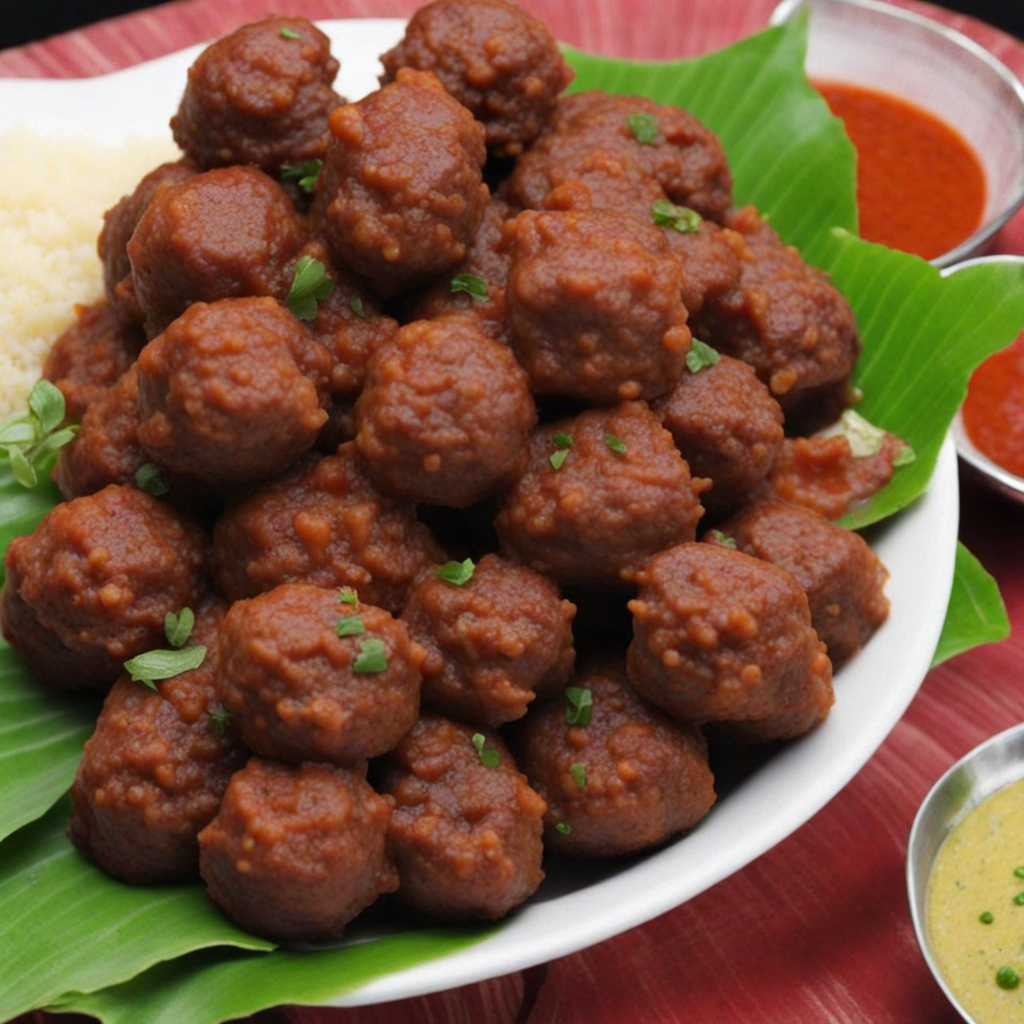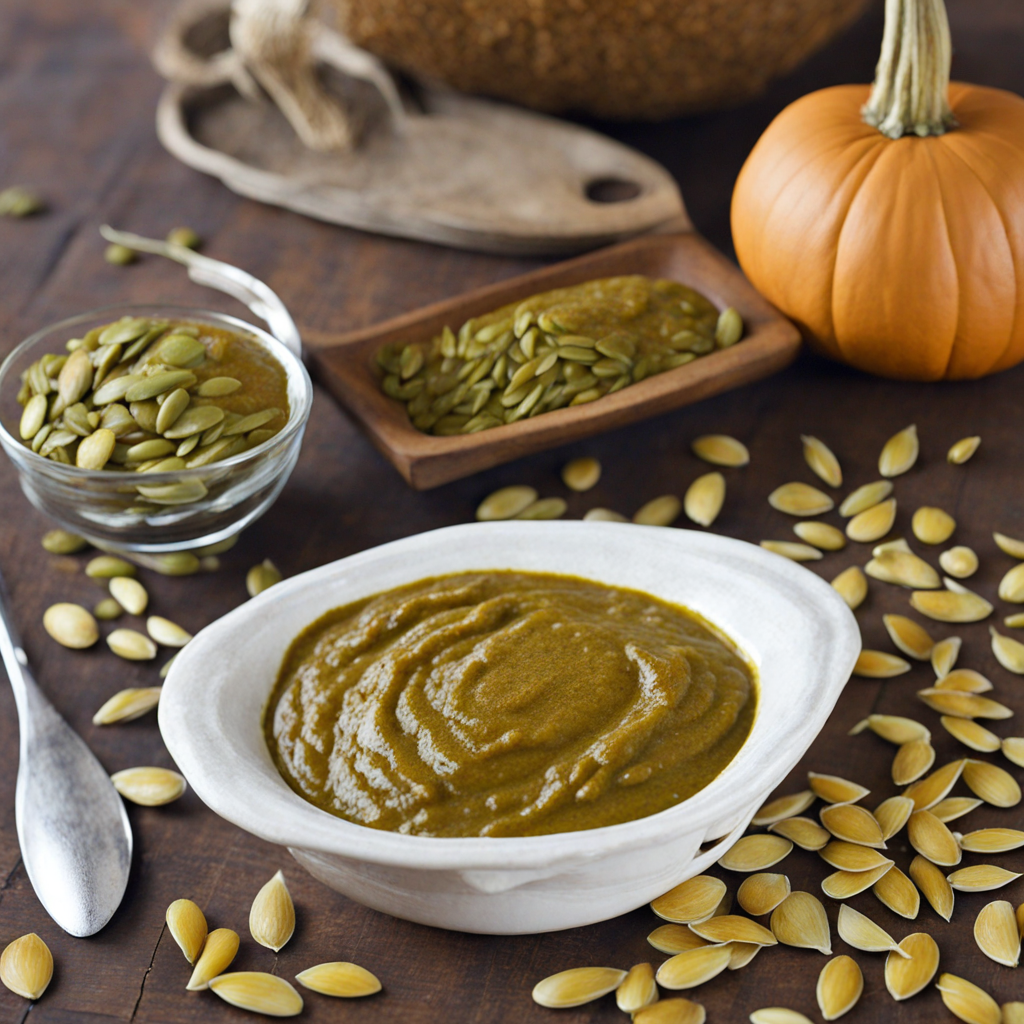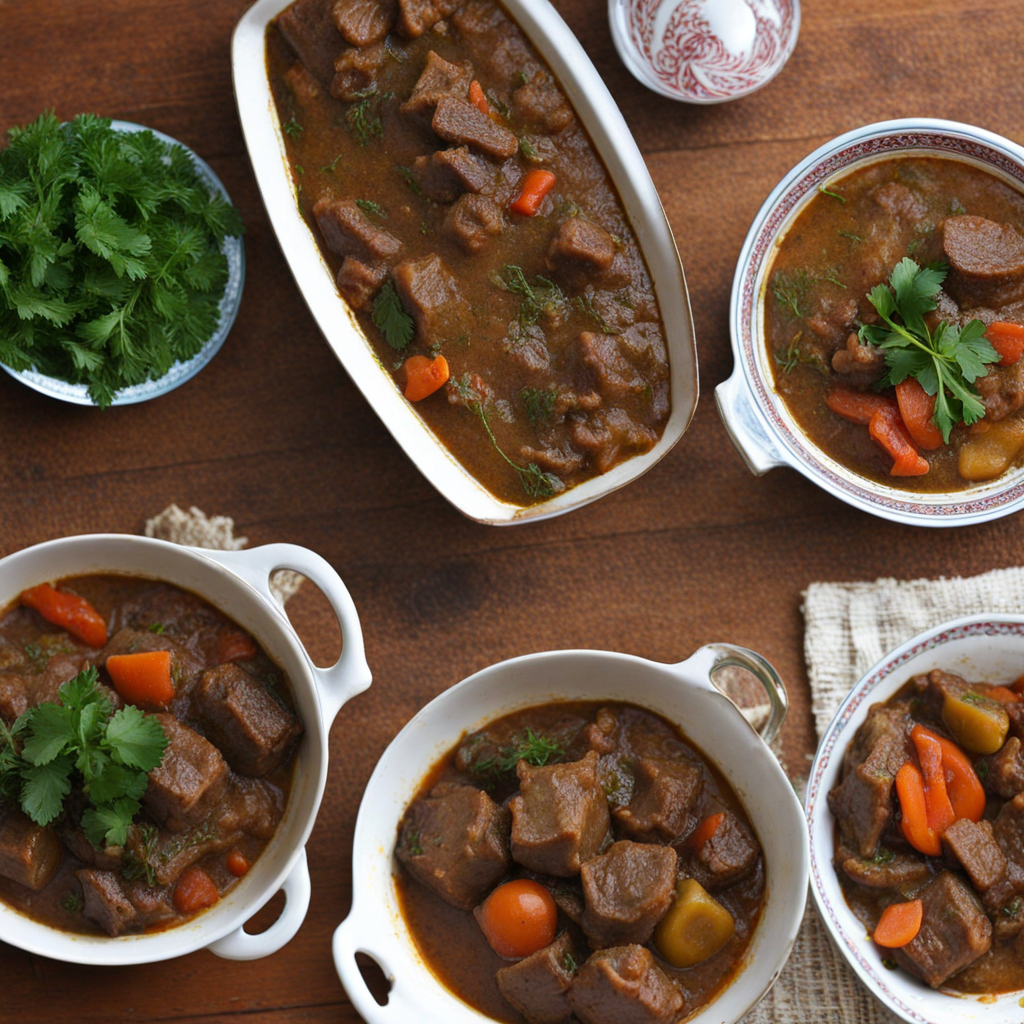Saka Saka
Saka Saka is a traditional dish from the Central African Republic, celebrated for its unique flavors and hearty ingredients. At its core, Saka Saka primarily consists of cassava leaves, which are finely chopped and cooked down to create a rich, earthy base. The leaves are often combined with ground peanuts, which add a delightful creaminess and nutty undertone to the dish. This combination not only enhances the flavor but also provides a nutritious boost, making Saka Saka a beloved staple in many households. The preparation of Saka Saka involves a careful cooking process where the chopped cassava leaves are simmered with various spices and seasonings. Local ingredients, such as palm oil, onions, and sometimes dried fish or meat, are incorporated to deepen the flavor profile. The dish is often seasoned with salt and pepper, allowing the natural taste of the cassava leaves and peanuts to shine through. The result is a flavorful and aromatic dish that reflects the culinary traditions of the Central African Republic. Saka Saka is typically served as a side dish alongside rice or plantains, offering a satisfying and balanced meal. Its vibrant green color and hearty texture make it visually appealing, while the combination of flavors creates a comforting experience for those who indulge in it. For anyone looking to explore new tastes, Saka Saka promises a delightful journey into the heart of Central African cuisine, showcasing the ingenuity of using local ingredients to create a dish that is both nourishing and delicious.
How It Became This Dish
Saka Saka: A Culinary Journey Through Central Africa #### Origins and Ingredients Saka Saka, also known as "Saka Saka" in the Lingala language, is a traditional dish that holds a special place in the culinary landscape of the Central African Republic (CAR) and neighboring countries like the Democratic Republic of Congo (DRC). The dish is primarily made from cassava leaves, which are rich in nutrients and serve as an essential staple in many Central African diets. Cassava, a root vegetable native to South America, was brought to Africa by Portuguese traders in the 16th century. Its adaptability to various climates allowed it to thrive in Central Africa, quickly becoming a vital food source. The leaves of the cassava plant are the star ingredient in Saka Saka. They are rich in vitamins A and C, calcium, and iron, making the dish not only delicious but also a nourishing choice. To prepare Saka Saka, the cassava leaves are first harvested, washed, and finely chopped. They are then cooked, often with the addition of palm oil, onions, and ground peanuts or other local ingredients, which vary by region. The result is a creamy, flavorful dish that can be enjoyed alone or served as a side to complement various proteins such as fish or chicken. #### Cultural Significance Saka Saka is much more than just a meal; it is a cultural symbol and a reflection of the communal lifestyle of the people in the Central African region. Traditionally, the preparation of Saka Saka is a communal activity. Women, who have historically been the primary food preparers in many African societies, gather to wash, chop, and cook the cassava leaves. This communal effort fosters social bonds and strengthens community ties. It is not uncommon for families to prepare large quantities of Saka Saka for celebrations, feasts, or communal gatherings, making it a dish associated with togetherness and sharing. In the context of Central African culture, food often plays a central role in rituals and celebrations. Saka Saka is commonly featured during weddings, religious ceremonies, and various festive occasions. Its preparation and consumption during these events signify unity and joy, as families and friends come together to celebrate life's milestones. The dish has also been adapted to modern tastes and preferences, but its essence remains deeply rooted in tradition. #### Evolution Through History The history of Saka Saka is intertwined with the broader socio-economic and political changes that have affected the Central African region. During the colonial period, the introduction of new crops and cooking techniques altered local diets. Despite these changes, Saka Saka has endured as a beloved traditional dish, showcasing the resilience of culinary practices amidst external influences. In post-colonial Central African Republic, Saka Saka continued to thrive as a symbol of national identity. The dish became a source of pride, representing the region's agricultural wealth and the ability to transform simple ingredients into something truly spectacular. As urbanization progressed and lifestyles changed, Saka Saka adapted to these new environments. It began to be served in restaurants and food stalls, making it accessible to a broader audience. The globalization of food culture has also impacted Saka Saka. As African diaspora communities spread across the globe, they brought their culinary traditions with them, including Saka Saka. This has led to a growing appreciation for African cuisine worldwide. In cities with significant Central African populations, you can now find Saka Saka on menus, celebrated for its unique flavors and nutritional value. #### Modern Interpretations and Global Influence In contemporary times, Saka Saka has seen various adaptations, reflecting both local tastes and global culinary trends. Chefs are experimenting with the dish, incorporating ingredients like smoked fish, meat, or even fusion elements that blend African flavors with international cuisines. These modern interpretations aim to introduce Saka Saka to new audiences, making it a versatile dish that can cater to diverse palates. Social media has played a crucial role in promoting dishes like Saka Saka, as food enthusiasts share recipes and cooking tips online. This digital age has allowed traditional foods to gain international recognition, leading to a renewed interest in African culinary heritage. Food festivals celebrating African cuisine often feature Saka Saka, showcasing its cultural significance and deliciousness to a wider audience. #### Nutritional and Economic Importance The nutritional benefits of Saka Saka extend beyond its delicious taste. With increasing awareness of food security and nutrition in Central Africa, Saka Saka has been highlighted for its health benefits. The dish is a great source of protein, vitamins, and minerals, making it an excellent choice for combating malnutrition, particularly in vulnerable populations. Moreover, cassava is a drought-resistant crop, ensuring that it can be cultivated even in challenging environmental conditions, contributing to food sovereignty in the region. Economically, Saka Saka represents the potential of local agriculture. The cultivation of cassava and the gathering of other local ingredients provide livelihoods for many families in rural areas. By promoting traditional dishes like Saka Saka, local economies can benefit from increased interest in native crops, fostering sustainable agricultural practices. #### Conclusion Saka Saka is more than just a dish; it is a reflection of the rich cultural tapestry of Central Africa. From its origins rooted in the cultivation of cassava to its role in fostering community bonds, Saka Saka has evolved over time, adapting to changing socio-economic contexts while remaining a beloved staple. As it gains recognition on the global stage, Saka Saka continues to symbolize resilience, unity, and the importance of preserving culinary traditions. Whether enjoyed in a bustling urban restaurant or a family home, Saka Saka embodies the spirit of Central Africa, inviting all who partake to experience its rich history and vibrant flavors.
You may like
Discover local flavors from Central African Republic


